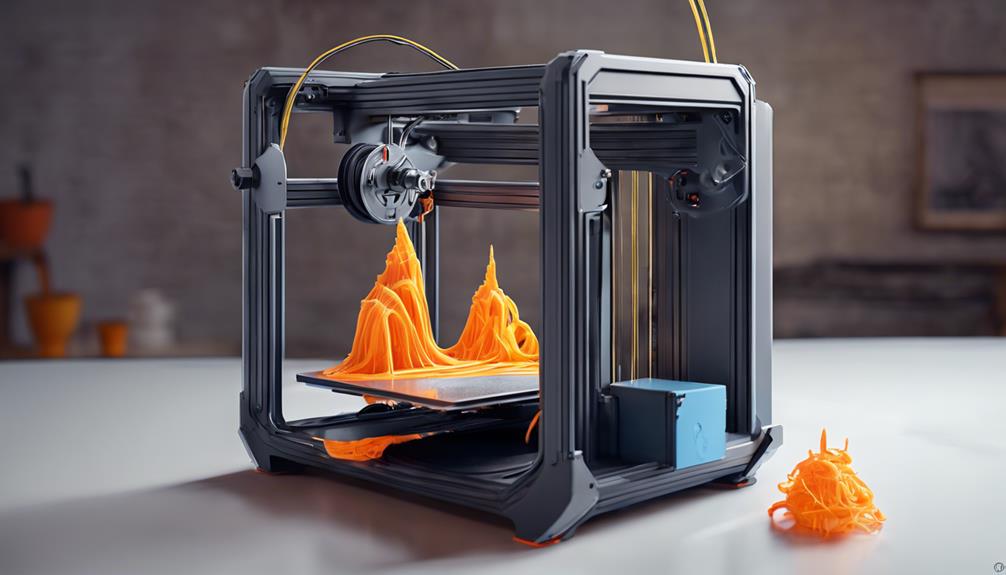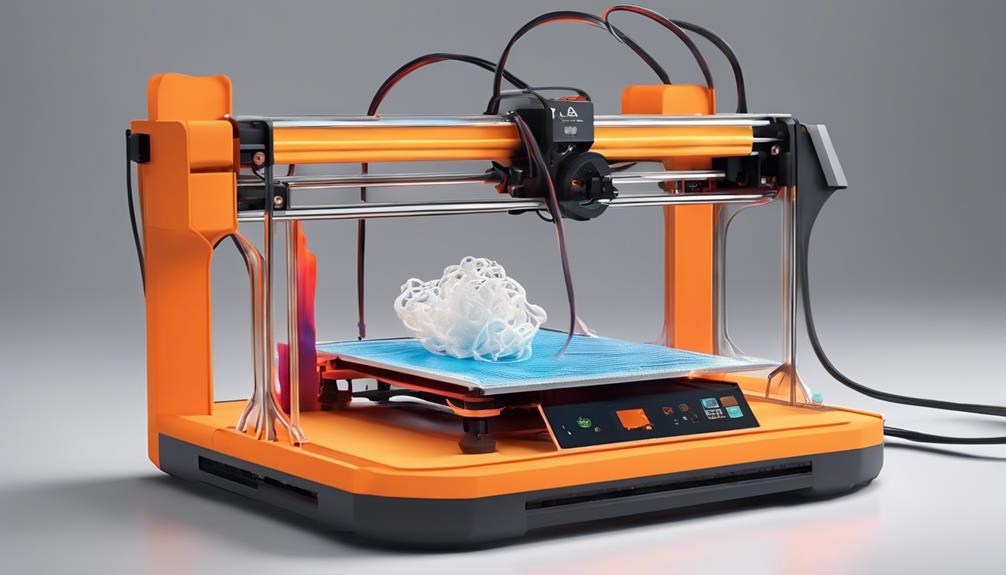Exploring the potential of heated beds in PLA printing can be a game-changer in the domain of 3D printing. The ability to fine-tune bed temperatures can greatly impact adhesion, warping, and overall print quality. However, the key lies not only in understanding the benefits but also in mastering the intricacies of calibration and material compatibility. By unraveling the nuances of heated beds for PLA, a world of possibilities opens up for enthusiasts and professionals alike, paving the way for flawless prints and efficient production processes.
Benefits of Heated Beds for PLA

Utilizing heated beds when printing PLA offers substantial advantages by greatly enhancing adhesion between the first layer of the print and the build platform. This enhanced adhesion helps prevent issues such as layer detachment and warping during the printing process.
PLA, being printed at lower temperatures, benefits greatly from the use of a heated bed to improve bed adhesion. The heated bed also reduces the chances of material shrinkage, ensuring a more stable and accurate print. By adjusting the bed temperature to around 70°C, close to the glass transformation point of PLA, ideal adhesion can be achieved.
Understanding PLA Adhesion Mechanisms
An in-depth comprehension of the adhesion mechanisms specific to PLA printing is essential for optimizing print quality and minimizing potential challenges. PLA adhesion is primarily achieved through the heated bed, which improves the bonding between the first layer of the print and the build surface.
The ideal bed temperature for PLA adhesion is around 70°C, close to its critical temperature. This temperature helps the PLA material adhere securely to the bed, preventing warping and detachment issues during printing.
Additionally, various methods such as using glue stick, hairspray, PEI sheets, Kapton tape, and masking tape can further enhance bed adhesion for PLA prints, ensuring successful and high-quality outcomes.
Strategies to Combat Warping Issues

To mitigate warping challenges in PLA printing, implementing effective adhesion strategies is essential for ensuring successful and high-quality prints. Warping in PLA printing can occur due to temperature differences in layers and tension within the printed model. While PLA is less prone to warping than ABS, utilizing a heated bed can greatly improve bed adhesion and prevent warping issues by keeping the object stable during the printing process.
Solutions to combat warping include leveling the print bed, adjusting the nozzle height, increasing the bed temperature close to the glass change temperature of PLA (around 60-65°C), using external adhesion products like glue sticks or hairspray, and incorporating additional features like a brim or raft in the printing process. By employing these strategies, users can enhance the overall quality of their PLA prints and minimize warping occurrences.
Maximizing Bed Adhesion for PLA
Improving bed adhesion for PLA printing is essential for achieving consistent and successful 3D prints. Ensuring proper adhesion helps prevent print detachment and warping issues. Here are some methods to maximize bed adhesion for PLA printing:
| Method | Description | Effectiveness |
|---|---|---|
| Glue Stick | Apply a thin layer on the print bed before printing. | High |
| Hairspray | Spraying a coat on the bed surface for better adhesion. | Medium |
| PEI Sheets | Provides a textured surface for improved adhesion. | High |
| Kapton Tape | Heat-resistant tape applied to the bed for adhesion. | High |
| Masking Tape | Easy to apply on the bed to enhance adhesion. | Low |
Overcoming Challenges With Heated Beds

Addressing challenges associated with heated beds in 3D printing requires strategic adjustments to optimize print quality and adhesion stability.
One common issue is the 'elephant's foot' effect, where the first layer of the print bulges due to excessive bed temperature. To overcome this problem, adjusting the bed temperature slightly lower can help prevent the issue without compromising adhesion.
Additionally, printing large objects can exacerbate the elephant's foot problem, so ensuring the bed temperature is calibrated accurately is essential.
Frequently Asked Questions
Can a Heated Bed Be Used for Materials Other Than Pla?
A heated bed can be utilized for various materials besides PLA. It enhances adhesion, minimizes warping, and aids in printing materials requiring elevated temperatures. Adjusting bed temperatures in accordance with specific material requirements optimizes printing outcomes.
What Is the Ideal Thickness for a Layer of Glue Stick on the Bed?
For best bed adhesion, a thin layer of glue stick, approximately 0.1mm, evenly applied, guarantees secure PLA printing. Balancing adhesion without excess buildup is crucial. Precision in this application enhances print quality.
How Long Should I Wait Before Removing a Printed Object From the Bed?
When removing a printed object from the bed, patience is key. Allow the bed to cool down to room temperature before attempting to detach the object. Premature removal can lead to warping or damage to the print.
Is It Necessary to Preheat the Bed Before Starting a Print?
Preheating the bed before starting a print is crucial to guarantee proper adhesion of the first layer. This step helps prevent warping and detachment issues, especially with materials like PLA. Adjusting the bed temperature close to the glass change temperature is recommended.
Can Using a Heated Bed Affect the Overall Print Time Significantly?
Using a heated bed can impact print time by improving adhesion, reducing warping, and preventing print failures. While initial setup may take longer, the benefits of a heated bed often outweigh any minor increase in overall printing time.
Conclusion
To sum up, heated beds play a crucial role in enhancing PLA printing quality by promoting adhesion and preventing warping.
Understanding the mechanisms of PLA adhesion and utilizing various strategies can maximize bed adhesion for successful outcomes.
It is essential to carefully calibrate bed temperature to avoid challenges like the 'Elephant's foot' effect.
By harnessing the power of heated beds, users can achieve excellent print quality without compromising adhesion, leading to successful 3D printing results.